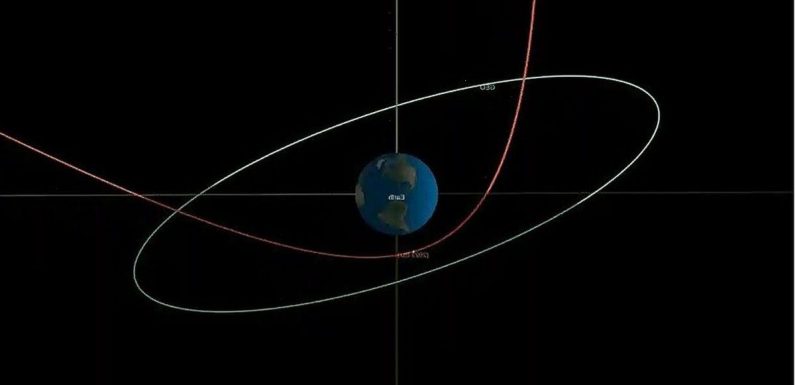
NASA animation details how Mars samples will return to Earth
We use your sign-up to provide content in ways you’ve consented to and to improve our understanding of you. This may include adverts from us and 3rd parties based on our understanding. You can unsubscribe at any time. More info
A truck-size asteroid will make “extraordinarily close approach” with Earth this week, scientists have claimed. The asteroid will be well within the orbit of geosynchronous satellites, according to the agency.
The agency further stated that it would be a near miss with no chance of hitting Earth.
Even if it came a lot closer, scientists said most of it would burn up in the atmosphere, with bigger pieces possibly falling as meteorites.
The agency did note that 2023 BU will come so close to the Earth that its path around the sun will be altered by the planet’s gravity.
“After its encounter, the asteroid’s orbit will be more elongated, moving it out to about halfway between Earth’s and Mars’ orbits at its farthest point from the sun,” NASA said in a statement.

NASA’s impact hazard assessment system, called Scout, quickly ruled out a strike, said its developer, Davide Farnocchia, an engineer at the agency’s Jet Propulsion Laboratory in Pasadena, California.
Farnocchia said: “But despite the very few observations, it was nonetheless able to predict that the asteroid would make an extraordinarily close approach with Earth
“In fact, this is one of the closest approaches by a known near-Earth object ever recorded.”
The asteroid was discovered four days ago by amateur astronomer Gennadiy Borisov, from his MARGO observatory in Nauchnyi, Crimea, NASA said.
Other agencies and labs analyzed the data and made more observations to come up with the asteroid’s path and description.
Discovered on Saturday, the asteroid known as 2023 BU is believed to be between 11ft (3.5m) and 28ft (8.5m) across.
NASA noted that even if the asteroid did impact Earth it “would turn into a fireball and largely disintegrate harmlessly in the atmosphere, with some of the bigger debris potentially falling as small meteorites.”
It was first spotted by the same amateur astronomer in Crimea, Gennady Borisov, who discovered an interstellar comet in 2019.
DON’T MISS:
Lockheed Martin all set to meet F-16s demand [SPOTLIGHT]
Prince Andrew ousted from swanky Buckingham Palace apartment by King [REVEAL]
Tory MP claims ‘massive arms factory’ must be built in Poland [INSIGHT]
Within a few days, dozens of observations were made by astronomers around the world, allowing them to refine the asteroid’s path.
That path will be altered by drastically by Earth’s gravity as it passes.
Instead of circling the sun every 359 days, it will move into an oval orbit lasting 425 days, according to NASA.
Source: Read Full Article